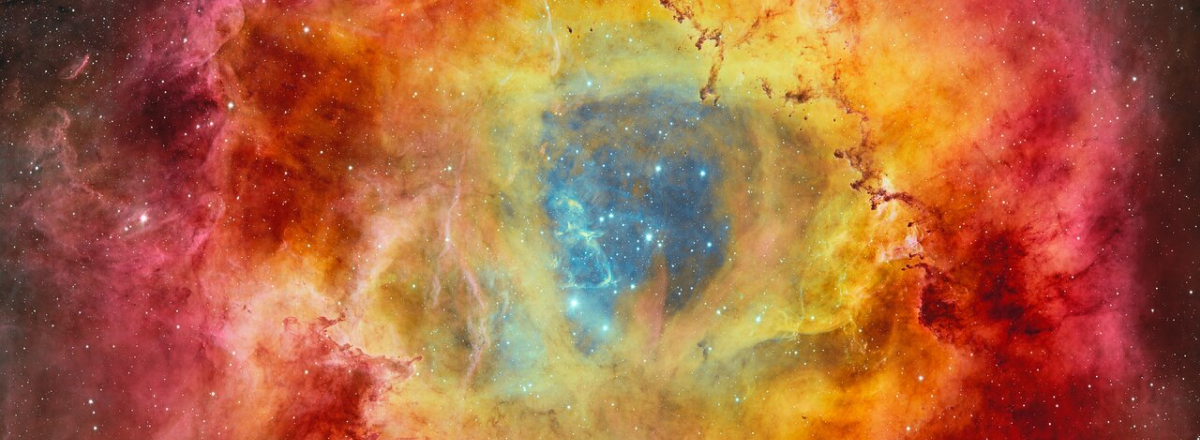Astronomers Capture Breathtaking Image of Star-Studded Rosette Nebula
While it appears faint through telescopes, the long-exposure image taken by DECam reveals its true splendor, showing the dense molecular clouds and “elephant trunks”—dark, dust-filled pillars believed to contain nascent stars.

Astronomers have captured an image of the Rosette Nebula, a star-forming region located approximately 5,000 light-years away in the constellation Monoceros. Taken with the Dark Energy Camera (DECam), this high-resolution photo reveals the intricate beauty of the nebula, with massive stars at its core illuminating clouds of hydrogen gas and creating vibrant hues of red, yellow, and pink.
The Rosette Nebula, a popular subject for winter sky observers, is visible near Orion, framed within the Winter Triangle. While it appears faint through telescopes, the long-exposure image taken by DECam reveals its true splendor, showing the dense molecular clouds and “elephant trunks”—dark, dust-filled pillars believed to contain nascent stars. The center is dominated by the NGC 2244 cluster, composed of young, massive stars whose intense radiation sculpts the nebula and drives the emission of light.
Scientists believe regions like the Rosette Nebula are similar to the environment where our own Sun and solar system formed around 4.6 billion years ago. Some of the cluster’s most massive stars are expected to go supernova, dispersing the nebula’s gases. What will remain are less massive, Sun-like stars—perhaps some even destined to host planetary systems like our own.

